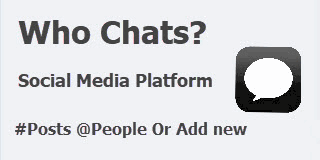-
Ροή Δημοσιεύσεων
- ΑΝΑΚΆΛΥΨΕ
-
Blogs
Modern Fantasy Sports Apps Design To Deployment

Building Modern Fantasy Sports Apps Easily
Fantasy sports have come a long way from being a casual weekend hobby. A few years ago, people would gather with their friends, write down their picks on paper, and just enjoy the game. Now, most of it happens inside sleek apps that seem to know more about players than fans themselves. You no longer have to be a stats geek or sports addict to enjoy fantasy sports. Today’s apps do most of the heavy lifting and give regular people the tools to compete like pros. And the best part is that creating these apps is not rocket science either. It’s about smart design, useful features, and simple tools that work together from the very start to the moment the app is ready for users.
Why These Apps Feel So Smart Now
If you’ve used a fantasy sports app recently, you probably noticed how smooth everything feels. You can pick players with a few taps, get tips without digging through news sites, and even switch up your team just minutes before a match starts. This kind of experience doesn’t happen by accident. It starts with a good design. Developers now focus on what people need and how to give it to them in the easiest way possible. That means thinking like a user and building something simple but powerful.
Modern apps start with user research. Developers want to understand what people enjoy, what confuses them, and what makes them stop using an app. With that in mind, they plan every screen, every button, and every option. Then they test it over and over until it feels just right. This is a big reason why even new users can download an app and start using it within minutes without any guide.
From Design Ideas To Something You Can Touch
The whole process begins with ideas. What features should the app have? How many screens will there be? What should the homepage show first? These questions shape the design process. Most developers start with basic sketches or wireframes. These are like the blueprint of a building, just drawn for an app. They show where things go and how users move from one part of the app to another.
Once the wireframe is ready, designers add colors, icons, and animations. The goal is to make the app not only work well but also feel fun and engaging. After that, developers turn these designs into real code. They write the backend, which is the part of the app you don’t see but that handles all the logic and data. And they build the frontend, which is the part you tap and swipe.
Making Sure Everything Works All The Time
Nobody likes apps that crash or freeze. So testing is a huge part of the process. Developers run different tests to make sure the app handles all kinds of situations. What happens if the internet connection drops? What if someone tries to do two things at once? What if thousands of users log in at the same time? The app needs to be ready for all of this.
Testing also includes checking how fast the app runs, how secure the data is, and whether it works on both Android and iPhones. Developers fix bugs, improve performance, and keep polishing until the app runs smoothly. Only after that does it move to deployment.
Getting The App Ready For Real Users
Deployment is the final step. This is when the app goes from the developer’s computer to the app stores where anyone can download it. But even here, there’s a lot to think about. Developers need to set up servers so the app can talk to the cloud and fetch the latest stats and news. They also monitor how the app performs in the real world. If people face issues, developers step in quickly with updates.
There are also things like user feedback, analytics, and app store reviews. These help the team improve future versions. Developers don’t just launch and forget. They keep updating, improving, and making the app better.
What Makes A Fantasy Sports App Great
The best fantasy sports apps have a few things in common. They are easy to use, fast, and packed with helpful features. They make people feel in control of their teams without overwhelming them. Good apps offer personalized tips, real-time updates, and smart suggestions. They also make managing your fantasy team feel like a fun game rather than a chore.
Another key feature is notifications. The app keeps users in the loop with reminders, breaking news, and game changes. It’s like having a mini sports analyst living in your phone. And all this becomes possible through careful planning and clever development choices.
Bringing Smart Features Into Fantasy Sports
These apps are no longer just about picking a team and watching scores. Developers now use technology like artificial intelligence and real-time data to make apps smarter. AI looks at past performances, team trends, and even player behavior to give better predictions. Real-time data keeps users updated the second something changes in the game.
This is the heart of Fantasy Sports App Development where creative design meets powerful technology. The real win is when users trust the app to help them make decisions without feeling confused. Every piece, from how it looks to how fast it loads, plays a role.
The Role Of The Developer In All Of This
Developers are the quiet heroes of fantasy sports. They mix creativity with logic to build apps that people love to use. But they also need to stay updated with trends. Every year, user habits change. People want faster apps, better graphics, and more personalized advice.
That’s why modern developers work closely with designers, testers, marketers, and even regular users. They gather feedback, look at usage patterns, and update the app regularly. This teamwork makes sure the app doesn’t just look good but actually helps users win their leagues and enjoy the game.
Keeping Users Hooked And Happy
A good fantasy app keeps people coming back. It might be through daily challenges, player streaks, or simple rewards. Developers add features that make users feel rewarded for playing. The goal is to make fantasy sports feel more like a game than a spreadsheet.
And the more fun the app feels, the more users stick with it. That’s why modern apps use smooth animations, helpful guides, and even chat options to make everything more engaging. It’s not about being flashy. It’s about creating a connection between the app and the user.
What’s Coming Next For Fantasy Sports Apps
The future looks exciting. We’re starting to see fantasy apps that talk back using voice commands. Imagine asking your app, “Who should I captain today?” and getting a spoken answer. Some apps are testing features where AI helps manage your team like a real coach. You’ll get strategy suggestions and even game forecasts.
Developers are also exploring ways to bring in virtual reality. You might one day walk through your fantasy stadium and see your team lineup on a screen around you. While that’s still some time away, developers are already thinking about how to make these experiences real and fun.
Wrapping It All Up
Fantasy sports apps are no longer side projects. They are big, smart, and built with care. From the first design sketch to the moment it hits the app store, every step matters. Developers who want to make great fantasy apps need to think like users and build like pros.
With the right design, smart features, and a bit of tech magic, any team of developers can go from a simple idea to a full fantasy app that people love. And that’s what makes this whole process so rewarding.




